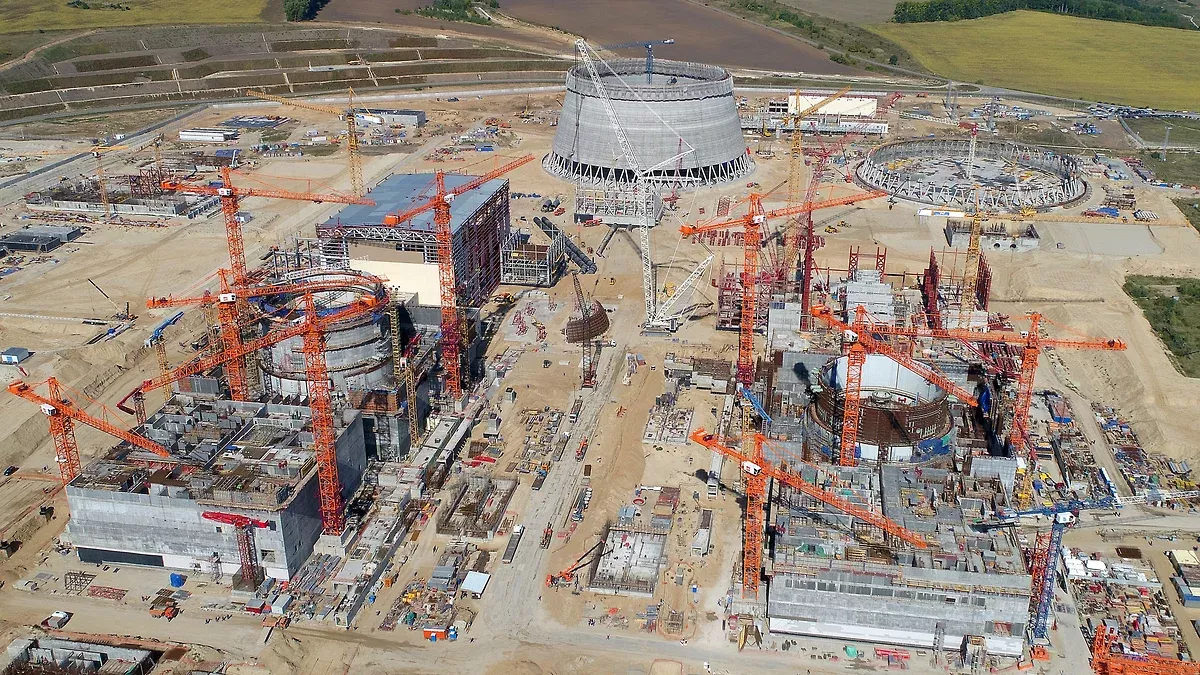 The deflector (dome part) of the passive heat removal system (PHRS) has been installed at unit 1 of Russia’s Kursk-II NPP, according to Rosatom’s engineering division. This is an aerodynamic device designed to increase draft in the ventilation duct and boost the efficiency of the ventilation system.
The deflector (dome part) of the passive heat removal system (PHRS) has been installed at unit 1 of Russia’s Kursk-II NPP, according to Rosatom’s engineering division. This is an aerodynamic device designed to increase draft in the ventilation duct and boost the efficiency of the ventilation system.
The entire system is based on natural circulation: atmospheric air enters the heat exchangers and once heated rises through air ducts to the outlet manifold located at the top of the dome. From there it returns to the atmosphere, thereby cooling the reactor compartment. The PHRS has the advantage of being able to operate on natural constant processes that do not require human intervention or a source of electrical power.
The deflector is installed at around + 65.4 metres. Currently the reactor building has reached a height of 75.7 metres. Structurally, the deflector is a metal cylinder made of stainless steel. It weighs 277 tonnes with a diameter of about 25.5 metres. Installation of all the other PHRS components will now take place. The entire PHRS system should be completed by the end of September.
Kursk II will replace the currently operating Kursk NPP, which comprises four ageing RBMK reactors (one of which is already closed). Units 1&2, currently under construction, will have VVER-TOI reactors – a development of the VVER-1200 reactor design. The VVER-TOI has increased power and improved technical and economic indicators, as well as increased resistance to extreme external influences. Currently work is being carried out at 156 facilities on the Kursk-II site. The number of construction and installation personnel in August totalled more than 8,500.
Image courtesy of Rosatom



